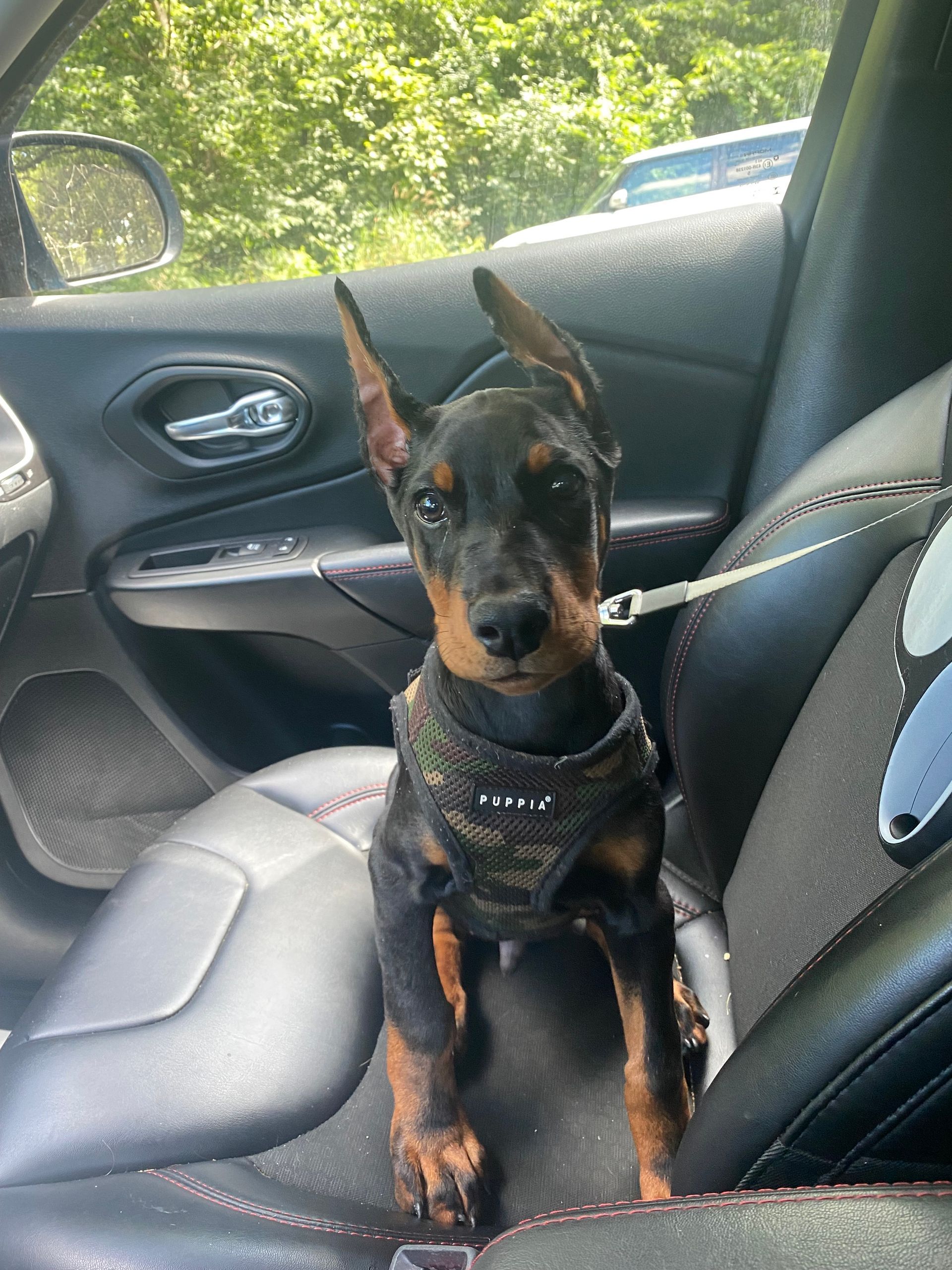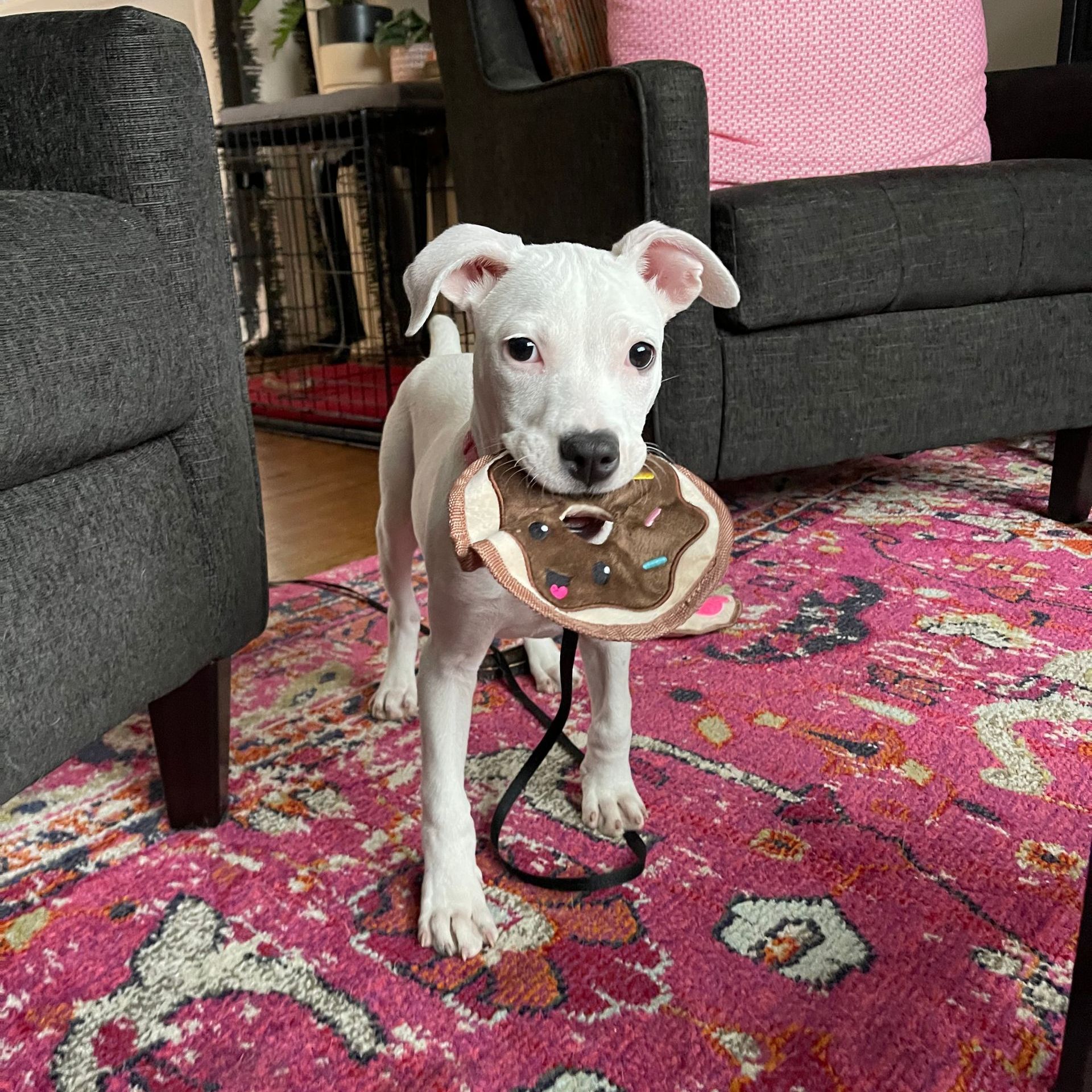E COLLAR 101
E collar 101
Electronic collars are one of the most misunderstood tools in dog training. I commonly hear people say that they electrocute, shock or burn dogs… these are all untrue statements pertaining to modern electronic collars with a quality brand name. Any “burns” can be attributes to a metal allergy or a pressure sore from leaving a collar on too tight in the same spot. Again is that the tools fault or the users fault? Just because it is electronic doesn’t mean it electrocutes, our phones, tv’s and iPads are all electronic and I don’t see people being “zapped” when they use those. People do these types of things and confuse themselves quite a bit, especially when it comes to dogs for some reason. Another great example is the term “bully breed”, people are now assuming that pit bulls, American bulldogs, boxers, bull mastiffs, olde English bulldogges, etc are all k9 equivalents of school yard bullies when what is really meant by the term “bully” is that they are all descendants of bulldogs…
Just like anything else we purchase in this world, quality matters. Getting an e collar from the clearance bin at Menard’s ( true example from a client) is not the same as buying a high quality name brand collar. This is like saying all cars suck because you own a 92 Chrysler lebaron, the guy driving the 2018 corvette might disagree with your statement that cars suck…The 2 best manufactures of e collars that I have experienced are ecollar technologies and dogtra.
Let’s start with why electronic collars have a bad rep in the first place. Early electronic collars were harsh and primarily used to punish not to teach. They had a very limited amount of levels, initially having 3 levels and then depending on the brand, it was common to see 10 levels. Every level for most dogs would be too high and could cause major fear issues, make a dog go into complete avoidance, panic and also completely mess up the drive of a dog. However, just like every invention since the dawn of time, the e collar has evolved. Think of how different an iPhone X is compared to a cellphone from the 90’s. Think of how different things were 20 even 10 years ago.
The stimulation from a good e collar feels almost identical to stim from a tens unit ( a medical device commonly used by physical therapists and chiropractors to relieve pain by pulsating muscles). Yes the stim can be uncomfortable and temporarily painful, I would be a liar if I told you otherwise, however there is a whole process to get dogs used to the collar and to understand the use of the collar before we would ever use it at an uncomfortable level. Just like every other tool out there, there are correct and incorrect uses for an e collar. Modern e collars have 100+ levels and go up by one’s, that is a very important feature when correctly using an electronic collar. You want to find a level that is just relevant enough to get the result you want. No need to kill a bug with a bazooka right?
In my opinion the wrong way to use an e collar is to slap it on the dog without any a conditioning and just get trigger happy when the dog is doing something that bothers you. This is what most people think e collar training is. The angry owner who is fed up and is going to get a quick fix. This is wrong and is misuse of a tool. I see this all too often and it gives a horrible name to the tool and trainers who use them wisely.
Another example of poor use of an e collar is when people hit a vibrate or tone button first as a warning and then follow with a higher level correction for non compliance. This teaches through fear association and creates a dependency on the tool. You wouldn’t believe how often I hear “ well he won’t listen unless his e collar is on” or “ all I have to do is show him the remote “. Again this is using the e collar as a threat and as something to be avoided. It also creates a situation where your dog will only listen while the e collar is on or around you.
So now that you have seen what not to do and have learned a little history, let’s learn how to use the e collar the right way. Now it is important to remind you here, that before going into e collar training, dogs that I train with already know the behaviors through positive reinforcement. I am using the e collar like an electronic leash to be able to increase the dogs freedom, reliability from further distances and as the lightest, most controllable, least personal form of a correction.
We start by finding the dogs working number. The working number is the lowest level the dog feels the stimulation at. At these low levels the stim is just merely noticeable, it’s honestly like the equivalent of being tapped on the shoulder or having a fly land on you. The idea is to be noticeable, not painful. The average range for a working number I see on the electronic collars I prefer ( e collar technologies mini educator) is between 5 and 15. There are definitely some anomalies out there, but 99% of the time, the working number falls in this range.
A dog will usually give you some physical response when finding the working level. Most dogs look down at the collar, a good portion of dogs will scratch at the collar, some will shake, flick their ears or even blink their eyes kinda hard. For ear flicking and blinking, you want to test the collar several times to see a consistent result as all dogs randomly blink and flick their ears. Most of the time I can tell when a dog just starts acting a little fidgety, without having to see any major signs through body language
After the “working” number is found I pair the stim of the collar to something the dog values (food, play, affection), food is the easiest and quickest. I do this by clicking the stim button, saying “yes “ and then rewarding the dog. I do this over and over and over so the dog understands that the collar predicts good things.
The second conditioning exercise I do is pairing the e collar to giving me attention. I start by clicking the stim button, giving a verbal prompt (kissy noise, whistle) and when they look towards me I say “yes” and then reward. Then I hold the stim button, give a verbal prompt, say “yes”, let go of the button and reward. The dog is learning that their behavior controls the stim and also learning that the sensation of stim means to give me their attention.
The next thing I do in my process is long line training. I start by walking the dog on a 15ft long line. Right before the dog reaches the end of the leash I hold the continuous button and make a right hand turn, once the dog turns with me, I release the button and continue walking. Through this process dogs learn when they are getting too far away from their handler and that the stim from the e collar means to find and follow their handler again. They are learning a concept called spacial awareness and that the stim of the e collar also predicts leash pressure and movement.
Next I pair the electronic collar to leash pressure. Leash pressure is a prerequisite of mine for any obedience training and it is absolutely crucial for successful e collar training. Leash pressure is when dogs learn to yield to the leash instead of opposing it. I start by letting the dog walk in front of me, I then hold the continuous stim button and make a right hand turn simultaneously applying pressure to the leash to stear the dog in the direction I am going, once they turn with me I release the continuous button. The dog is learning that following me releases the stim, paying attention to me releases the stim and that their behaviors are controlling the stim.
All that I discussed above is simply the conditioning process. To layer the e collar over known obedience cue’s the formula is as follows:
Phase 1
Hold= press and hold the continuous button
Cue= give your verbal cue
Guide= guide them into the position you are looking for using leash pressure or sometimes a hand signal
Ex, hold the continuous button, a split second after you start holding the button say “sit”, move upwards on the leash to encourage the dogs back end to touch the ground if necessary, release the button and leash pressure, say “yes” and reward the dog
Phase 2
Hold and cue.
Hold the continuous button, a split second later say sit, when the dogs back end touches the ground release the continuous button, say “yes” and reward
Phase 3
1 free cue
Say sit, if the dog sits say “yes” and reward.
If the dog does not sit, repeat phase 1 or 2 to help them figure it out.
Adding duration
If your dog gets up before you have released them, hold the continuous button and say “no” simultaneously, help them back into position with leash pressure as necessary.
What if my dog keeps breaking the cue?
If a dog keeps breaking a cue like sit for example and I know the dog knows exactly what it is supposed to be doing, I will raise the level of the e collar to the lowest effective level. I also keep the leash on at this phase so I can help them if necessary.
Corrections
Once the e collar is conditioned and accepted by the dog, you can use the e collar to correct behaviors you want the dog to stop doing. Things like jumping, counter surfing, play biting, digging, going on furniture, not honoring doorway thresholds etc. For something quick like jumping, I will press the momentary button at the lowest effective level for that behavior, once the dog stops jumping and all four paws are on the floor, I say “yes” and reward them generously. For a behavior like going on a couch they are not supposed to, I will have the dog drag a leash around so I can help get off the couch. Once they are on the couch I find the lowest effective level on the remote and press the continuous button simultaneously applying leash pressure in the direction away from the couch, once all four paws are on the floor, I say “yes” and reward generously.
In conclusion, I could add a lot more to this article and thought of doing so, but I will save those topics for another time. I have already discussed why punishment is necessary in dog training and have tons of videos of using an electronic collar. Eventually I will make an article comparing different tools and about more common behavior problems and solutions.
Thanks for reading,
Tim – Wagging Rights Dog Training
South Elgin dog training, Bartlett dog training, St. Charles, Geneva, West Chicago, Carol Stream, Batavia, Campton Hills, Streamwood, Schaumburg, Bloomingdale, Barrington, Hampshire, Elburn, Burlington, Sleepy hollow, Dundee


















